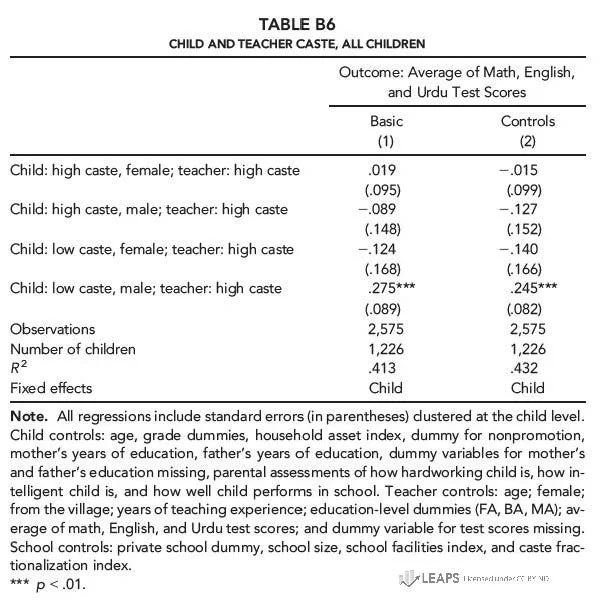The idea: Various studies have explored the effects of shared social characteristics (race, ethnicity, gender, caste) between students and teachers on learning outcomes, especially for disadvantaged students. Shared characteristics between students and teachers can play a role in disadvantaged students’ ability to catch up with peers. Caste is one such social characteristic that impacts learning outcomes independently as well as through student and teacher interactions.
South Asia has a long history of caste-based inequalities, with most of the literature focusing on India with limited research on Pakistan, where caste-based inequalities are thought to be occupation-based. Exploring the complementarities between teacher and student characteristics in the education production function for Pakistan can help us better understand the impact of these interactions on learning and mobility of disadvantaged students.
A Teacher Unlike Me: Social Distance, Learning, and Intergenerational Mobility in Developing Countries
Naureen Karachiwalla
Citation: Karachiwalla, Naureen. 2019. "A Teacher Unlike Me: Social Distance, Learning, and Intergenerational Mobility in Developing Countries." Economic Development and Cultural Change, University of Chicago Press, 67(2).
Study Design and Findings
What does the author find?
What explains this counter-intuitive result?
Karachiwalla uses the LEAPS data to examines the effect of the interaction between caste of students and teachers on learning outcomes in rural Punjab, Pakistan. She uncovers two key results. First, low-caste children scored higher on average than high-caste children for tests in Mathematics, English and Urdu, with low-caste boys securing the highest scores relative to their peers. Second, low-caste boys perform better when taught by high-caste teachers.
How does the paper estimate these relationships?
Karachiwalla argues—and provides evidence—for an aspirational channel. For a low-caste child (particularly a boy), being taught by a high caste teacher has the potential to open avenues and networks that might otherwise be difficult to access, as long as he/she can impress their teacher. Indeed, in the years that low-caste boys are taught by high-caste teachers, they receive more help from their parents and have higher aspirations to secure skilled work and pursue education (1.4 additional grades) when taught by high-caste teachers. In contrast to this positive result, Karachiwalla does not find evidence of the more pernicious aspects of caste, such as discrimination by teachers or differences in teacher quality.
The study relies on the richness of the LEAPS panel, whereby children are observed for multiple years with different teachers. By comparing the test score gains of the same child when taught by a high- versus a low-caste teacher, the authors is able to evaluate the impact of the teacher’s caste on the child’s test score growth. Further, both low and high-caste children are taught by the same teacher, she is able to rule out differences in teacher quality as an alternate explanation.
Study Resources
The following resources are for public use in presentations, papers, lectures, and more under the Creative Commons license BY-ND. Click the images below to view or download individual images, or use the button to download all.
As a condition of use, please cite as: Qureshi, Javaeria A. 2017. "Additional Returns to Investing In Girls’ Education: Impact on Younger Sibling Human Capital." The Economic Journal 128 (3285-3319).








